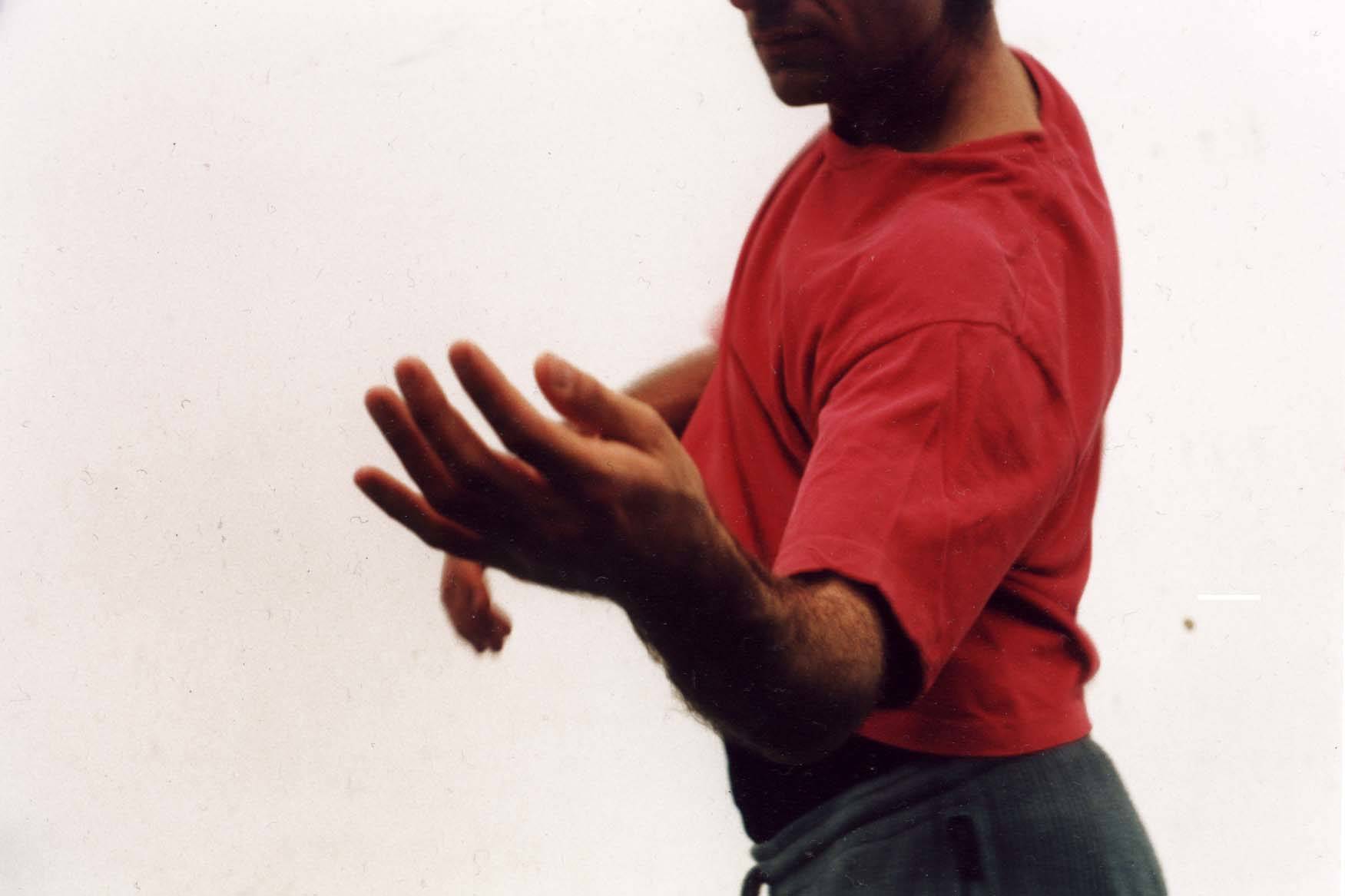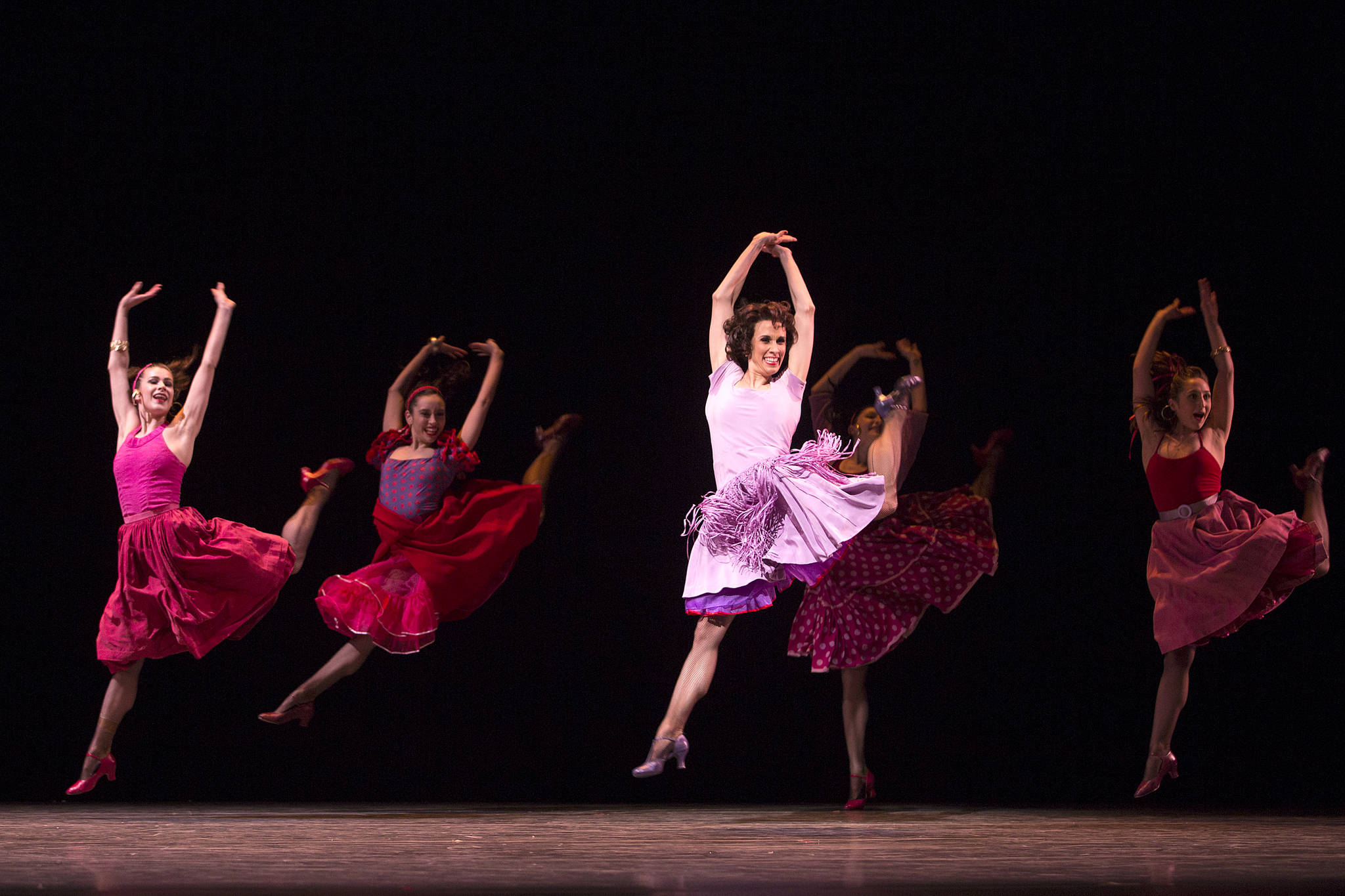IN SOME PRODUCTIONS of The Nutcracker, at a moment in the “Dance of the Sugar Plum Fairy” the ballerina, standing unsupported on pointe in arabesque, magically slides forward—supposedly proof of her supernatural nature but actually assisted by some hidden stage technology. In the half-dozen performances that made up an evening called Myriad, the skaters of the Seattle Ice Theater routinely glide around a specially installed rink at the Paramount, showing us a 360-degree view of a static shape, rather like a statue on a lazy Susan. Which is to say that what might be a trick in one setting is a standard practice in another.
Seattle Ice Theater
Paramount Theater, October 15-17
Ice dancing is enough like concert dance to make it familiar to someone more accustomed to a studio than a rink, and yet you trip yourself up if you try to think of it as just another dance form. Its origins in ice skating give it a different set of conventions as well as a separate vocabulary. The skates themselves are an obvious marker, often making a lump instead of an attenuation at the end of an otherwise balletic line, but the bigger distinction is in the way the foot responds to the ground or, in this case, to the ice. Dance techniques from ballet to tap depend on a flexible foot, one that can push off the ground for a jump, or roll through its many joints to cushion a landing. When this foot is enclosed in a heavy boot with a steel blade firmly attached to the sole, the articulation must come from somewhere else in the body. Instead we see a highly developed manipulation of momentum, playing with acceleration and deceleration in spins and turning jumps. Skaters work with a different part of Isaac Newton’s tool kit.
BUT IF ICE DANCING isn’t dancing, it isn’t traditional ice skating, either. It is supposed to be more responsive to music, less strictly athletic and independent of tricks. In the past it’s struggled to define exactly what those requirements mean, and judging by the performances of Seattle Ice Theater, that process isn’t complete yet.
In two group works, former ice dance champion turned coach/choreographer Bernard Ford makes good use of what skating does well, moving an otherwise static shape through space and contrasting short, sharp, repetitive action with long swoops and glides. His “Hands On” owes a great deal to Bob Fosse’s trademark style, but in “Blue Bolero” he isn’t quite able to keep away from the more gimmicky parts of the skating world, costuming his performers in glowsticks and bathing them in black light. His duet to the “Bell Song” from Lakme and professional competitor Rory Burghart’s choreography for herself to George Gershwin’s “Summertime” both fall into the skating convention of ignoring the underlying rhythmic structure of the score to accommodate the demands of spinning and jumping.
“Forest,” choreographed by the group’s artistic director Rebecca Safai to a piano score by John Adams, was overlong, with group after group of skaters traveling around the stage distinguished only by their costumes. With the exception of some prop branches and some twiggy bits stuck in one woman’s headdress, it was hard to find much arboreal about it. Another of Safai’s works on the program, “Passage,” suffered from its overwrought scenario in which a tattooed, shirtless man struggles to break free from some unarticulated threat. He is aided by Sky Cries Mary and a benevolent woman in a silver unitard and a headdress that looked like a model of planetary orbits—the chains around his wrists were the last, literal nail in the coffin.
Although many of the themes in these works were heavy-handed at best and the costumes often too full of sequins and glitter, the choreographical gut-work— the bodies moving through space—was surprisingly clean. Take away the clutter, and there’s the potential for some glorious exploration of pattern and form, and an expressivity that reaches beyond the tricks toward transcendence.








